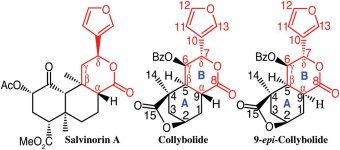"Rhodocollybia maculata (Alb. & Schw.:Fr.) Singer, Schweiz. Zeit. Pilzk. 17: 71. 1939.
Agaricus maculatus Alb. & Schw.:Fries, Syst. Mycol. 1: 45. 1821.
Collybia maculata (Alb. & Schw.:Fr.) Kummer, Führ. Pilzk. 117. 1871.
Agaricus carnosus Curt., Fl. London 5: 71. 1777.
Gymnopus carnosus (Curt.) Murrill, N. Amer. Flora 9: 358. 1916.
Pileus 40-95(-175) mm broad, obtusely convex with an inrolled margin when young, expanding to planoconvex, sometimes with a low, broad umbo, margin becoming decurved; surface glabrous, dry or moist, not viscid, not hygrophanous, pinkish buff to cinnamon buff (pinkish buff, cinnamon buff; 5A3, 5B5) when young and fresh, somewhat paler with age and developing rufescent, ferruginous or reddish brown (7C-D8; 9D8,7) spots; context 8-15 mm thick, whitish; odor none or pungent and fungoid, taste bitter. Lamellae adnate to adnexed, close to crowded, thin, moderately broad (4-8 mm), whitish to pale cream or pinkish buff (4, 5A3, 2), frequently spotted with age (as in pileus) along the sides and edges; edges uneven to eroded, minutely pubescent (with a lens) when dried. Stipe 50-100(-120) mm long, 8-13 mm thick, more or less equal, but subradicating and tapering below the substrate level, fibrous; surface dry, tomentose to pruinose, more rarely subvelutinous, becoming glabrous, striate sulculate, sometimes twisted, whitish, typically developing rufescent spots (as in pileus and lamellae) with age; interior becoming hollow.
Spore deposit pinkish buff to light ochraceous buff (pinkish buff; 73. p. OY; 70. 1. OY). Spores 5.6-6.4(-7) x 4.8-5.6 µm, globose to subglobose or broadly ovoid, smooth, often with a dextrinoid and cyanophilous endosporium. Basidia 21-34.8 x 6.8-8.4 µm, clavate, four sterigmate, not siderophilous, rarely scleroid. Lamellar trama parallel to interwoven, inamyloid; hyphae 3.5-10.5 µm in diam, smooth, thin walled, rarely with oleiferous contents. Pleurocystidia absent. Cheilocystidia 32.2-58.6 µm long, sometimes collapsed on lamellar edge and then inconspicuous, clavate to cylindric or somewhat diverticulate to irregularly lobed. Pileus trama interwoven, inamyloid; hyphae (3.5-)5.6-9.8(-14) llm in diam, smooth, thin walled. Pileipellis a distinct layer of tangled, cylindric hyphae, forming a trichodermium when young, becoming interwoven and repent with age; cells 2.8-5(-5.6) µm in diam, smooth, thin walled, occasionally subgelatinous. Stipitipellis a layer of parallel, vertically oriented hyphae; cells 2.8-4.9 µm in diam, smooth, thin walled, sometimes giving rise to cylindric or flexuous caulocystidia, 3.5-6.3 µm in diam. Clamp connections present in all tissues.
Habit, habitat, and distribution: Scattered to gregarious from buried wood in coniferous forests or in mixed woods with conifers (Picea, Pinus, Tsuga). Occurring in the northeast from July and August into October.
Discussion: The typical form of Rhodocollybia maculata is not uncommon in the northeast, especially during the latter part of the collecting season. Reliable field characters are the pallid colors, rufescent spots on the basidiocarp, thick context, bitter taste, and a subradicating stipe. Microscopically, the dextrinoid, globose spores and the interwoven elements of the pileipellis easily separate this species from others in the genus.
Several varieties of R. maculata have been described. Smith and Hesler (1943) and Lennox (1979) have provided descriptions and keys for the North American variants. The major distinguishing features for these varieties are differences in spore size and shape, color of the lamellae, odor, and the presence or absence of a rufescence. In addition to the type variety, I have found only two others in the northeast. They are R. maculata var. scorzonerea(Fr.) Lennox and R. maculata var. occidentalis (A. H. Sm.) Lennox. Variety scorzonerea is characterized by yellow lamellae (the stipe is sometimes yellow also) and ellipsoid spores measuring 5.6-7 x 3.5-4.2 µm, while variety occidentalis lacks the yellow colors but has the same ellipsoid spores 5.6-7 x 3.5-4.2 µm (see Micro Features). Both of these varieties have a bitter taste."



